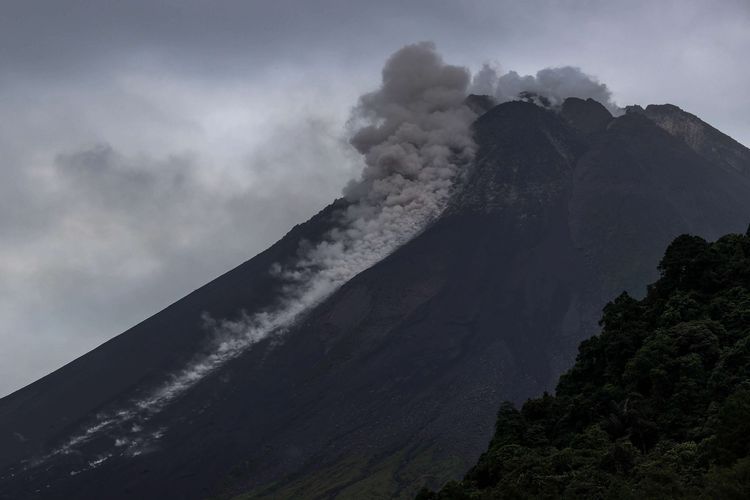
Mount Merapi on the border of Central Java and the Special Region of Yogyakarta is still showing volcanic activity over the past week.
Based on records from the Geological Disaster Technology Research and Development Center (BPPTKG), from February 4, 2022 to February 10, 2022, there were three hot cloud avalanches and 133 lava avalanches. Hot cloud avalanches over the past week are heading to the southwest, upstream of the Bebeng River. The maximum glide distance is 2,000 meters
In addition to hot clouds of avalanches, BPPTKG noted that lava avalanches were observed 133 times to the southwest, dominant to the Bebeng River. The maximum sliding distance of lava avalanches is 2,000 meters. "It was reported that there was ash rain on February 6, 2022, including in Cangkringan, Sleman and Musuk Districts, Boyolali," said Head of BPPTKG Hanik Humaida in a written statement, Friday (11/2/2022).
Based on morphological analysis, no significant morphological changes were observed in the southwest lava dome and the central dome. The volume of the southwest lava dome is 1,670,000 cubic meters and the central dome is 3,007,000 cubic meters. "The deformation of Mount Merapi this week shows a distance shortening rate of 0.7 centimeters per day," he said.
Hanik revealed that the volcanic activity of Mount Merapi is still quite high in the form of effusive eruption activity. "The activity status is set in the Alert level," he explained. The current potential hazards are lava avalanches and hot clouds in the south-southwest sector covering the Boyong River for a maximum of 5 kilometers, Bedog, Krasak, Bebeng rivers for a maximum of 7 kilometers.
In the southeast sector, the danger zone includes the Woro River for a maximum of 3 kilometers and the Gendol River for 5 kilometers. Meanwhile, the ejection of volcanic material in the event of an explosive eruption can reach a radius of 3 kilometers from the summit.